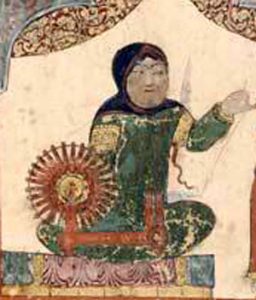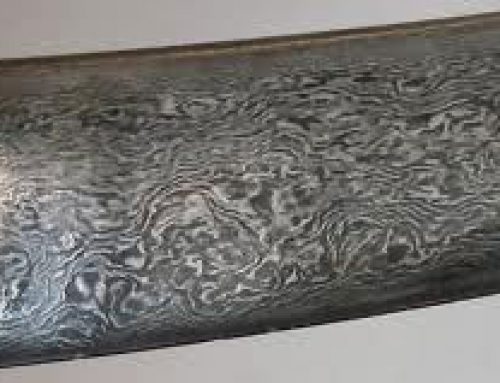
Ancient Indian science: Mohenjo Daro (ca. 2000 BC)
From the time of the Harappans to the time of the Islamic conquests, Indian scientists and mathematicians were leaders. Ancient Indian science especially stood out in mathematics and engineering.
Invention of zero
History of steel
Ancient India articles
Harappan science and math in India
The Harappans in 2500 BC had a sewage system at their city of Mohenjo-Daro, and carefully laid out, straight streets. So even though we can’t read their writing, we know that the Harappans understood a lot of geometry.
The Harappans learned how to write numbers from West Asian mathematicians, and developed them further.
West Asian numbers
Harappans were the first people to use base 10 for their weights. They may have used the weights for the gold trade. (There was a lot of gold in South India that they sold to other places.) Indian interest in number systems based on ten kept going throughout antiquity and the Middle Ages.
History of gold
Ancient Indian science: an Indian water wheel powered by oxen
Indian work on infinity, astronomy, and medicine
A severe climate change halted development at Harappa around 2000 BC. But the resulting Indo-European invasion of 1500 BC brought military advances to India. The Indo-Europeans or Yamnaya brought horse-drawn war chariots with them. Possibly the Indo-Europeans also brought new math and astronomy ideas from Babylon.
Who were the Indo-Europeans?
By 1300 BC Vedic mathematicians in India like Lagadha were discussing the idea of infinity and the movements of the sun and the moon.
Infinity and Indian math
By 1000 BC, they were writing the Atharva Veda, a medical text. A second military advantage came about 800 BC. That’s when the Vedic people in northern India learned to smelt iron from the Assyrians in West Asia. Not long afterward, people were probably smelting iron in South India, too.
Ancient Indian medicine
History of iron
Ancient Indian science of gears, surgery, and steel

Replicas of the surgical tools Sushruta describes in his book
Around 500 BC, thanks to Persian influence, the city of Taxila (in modern Pakistan) became a great scientific center. Atreya, a great botanist (plant specialist) and doctor, was working at Taxila about this time. The surgeon Sushruta wrote a book explaining how to pull teeth and set broken bones. Soon afterwards, Indian mathematicians did more work on infinity.
More about Sushruta
Around the 300s BC, in the time of the Mauryan Empire, Indian farmers seem to have improved on the older shaduf. They invented water wheels to lift water for irrigation. These were the earliest water wheels in the world, though these don’t provide power. They’re powered by oxen turning them. These Indian water wheels may be the earliest use of gears.
What are gears?
History of cattle
What’s irrigation?

Sri Lankan steel furnace (600-1000 AD)
Fifty or a hundred years later, still under Mauryan rule, Indian scientists were the first in the world to be smelting iron with carbon to make steel.
History of steel
Sewing needles and embroidery
What is the Silk Road?
Indian traders made a lot of money selling this steel on the Silk Road. Blacksmiths made the steel into knives and swords and sewing needles.
Buddhism and Indian numbers
The fall of the Mauryan Empire about 200 BC didn’t end India’s strong position as a scientific leader. Scholars came from as far away as China to study at the great Indian university at Taxila and the Buddhist university further east at Nalanda.
What is Buddhism?

Indian numbers
Indian mathematicians – in cooperation with Chinese mathematicians – worked out the number system we use today. These numbers made it a lot easier to add and multiply than it had been before. Indian numbers made it possible to write fractions easily.
The Indian number system

Child with smallpox (Bangladesh 1973)
Indian doctors were also leading medical research: the doctor Charaka described the first big smallpox epidemic when it reached India in the 200s AD. Like Chinese and Roman doctors about this time, Charaka thought most diseases were caused by imbalances of humors in the body.
Sugar and the invention of zero
The formation of the Guptan Empire about 300 AD encouraged research by providing a stable, peaceful place to work. About 350 AD, food scientists worked out a way to make sugar cane juice into crystallized sugar, so traders could sell it on the Silk Road.

Crystalized sugar lumps
History of sugar
Invention of zero
More about algebra
Indian mathematicians kept on exchanging ideas with Chinese mathematicians, and came up with new ideas, including the idea of zero, which soon led to the development of algebra.
Inoculation against smallpox

The ruins of Nalanda University
The collapse of the Guptan Empire about 500 AD did not prevent continuing scientific research in India. Nalanda University was still welcoming scholars from all over Central Asia and China throughout the early Middle Ages. Not long after the collapse, the great astronomer Arya Bhata wrote a book.
Arya Bhata and trigonometry
Inoculation against smallpox
What was smallpox?
In 628 AD, the Indian mathematician Brahmagupta wrote a book explaining the mathematics of zero. And in the 700s AD, the Indian doctor Madhav invented inoculation, to prevent people from catching smallpox.
Spinning wheels and cotton

Model of Indian churka or cotton gin (1100s AD)
But the great universities in India were run by Buddhists, and by the 600s AD fewer and fewer people in India were Buddhists. By the time the Chinese emperor T’ai Tsu sent 150 Chinese monks to India to learn about Buddhism about 1000 AD, Indian universities, and ancient Indian science, were going downhill.
There were still engineering inventions: Indian advances in iron-working in the 1000s and 1100s AD led Indian architects to be the first to use iron beams to replace wooden beams for building big temples.

Spinning wheel in Baghdad (al-Wasit, 1237 AD)
About the same time, the Indian textile industry invented the churka, a wooden machine that used new kinds of gears to get the seeds out of cotton more efficiently, and possibly the spinning wheel.
History of cotton
The spinning wheel
But in the 1200s AD, the great university at Nalanda finally closed its doors. Scholars moved to newer Islamic universities further northwest in Baghdad, and Buddhist universities northeast in Song Dynasty China.
Did we answer your questions about ancient Indian science? Let us know in the comments!





india is confusing
India isn’t any more confusing than anywhere else, but I agree that Indian history can seem confusing. That’s because thousands of historians have worked for hundreds of years to shape European history into a story that’s easy to understand. The same work is only beginning to be done for India (and this site is part of that work.)
can we cite this page
Of course! The correct format for citations is at the end of each article.
this was very helpful and i used all the information in a project ^^)
Wonderful! Best of luck with your project!
Why do i exist???
You may be interested in this article: https://quatr.us/india/bhagavad-gita-religion-india.htm
Hi can u write more about math.
Did you see this article? https://quatr.us/india/invention-zero-india-mathematics.htm